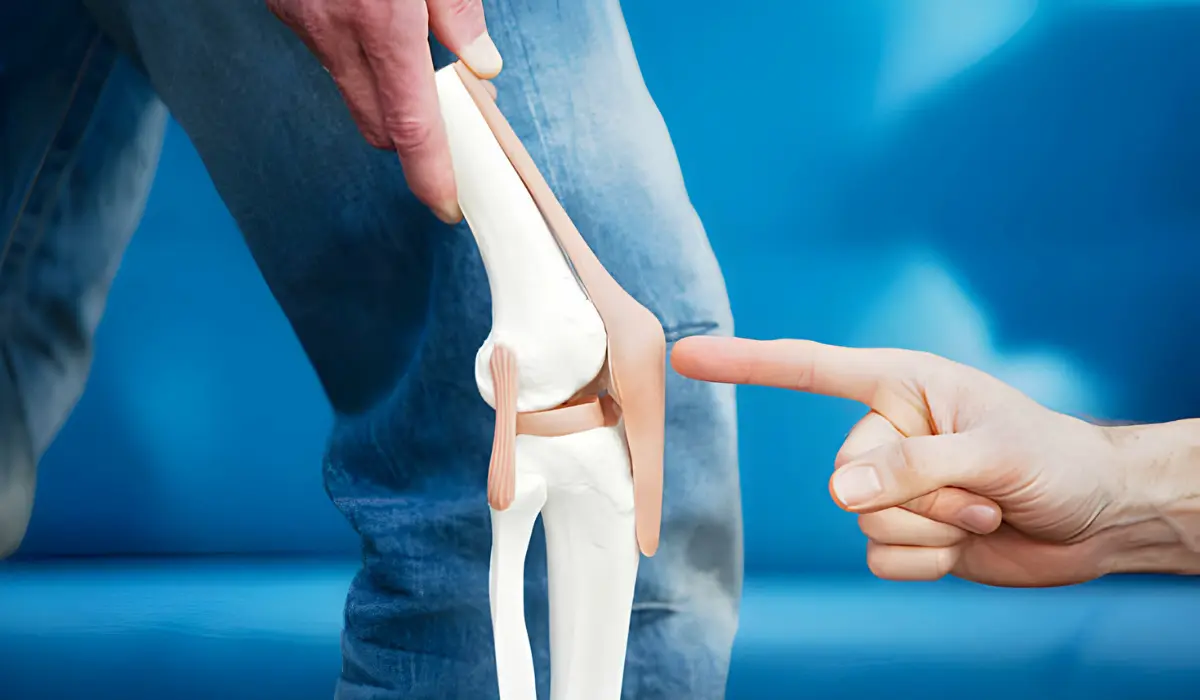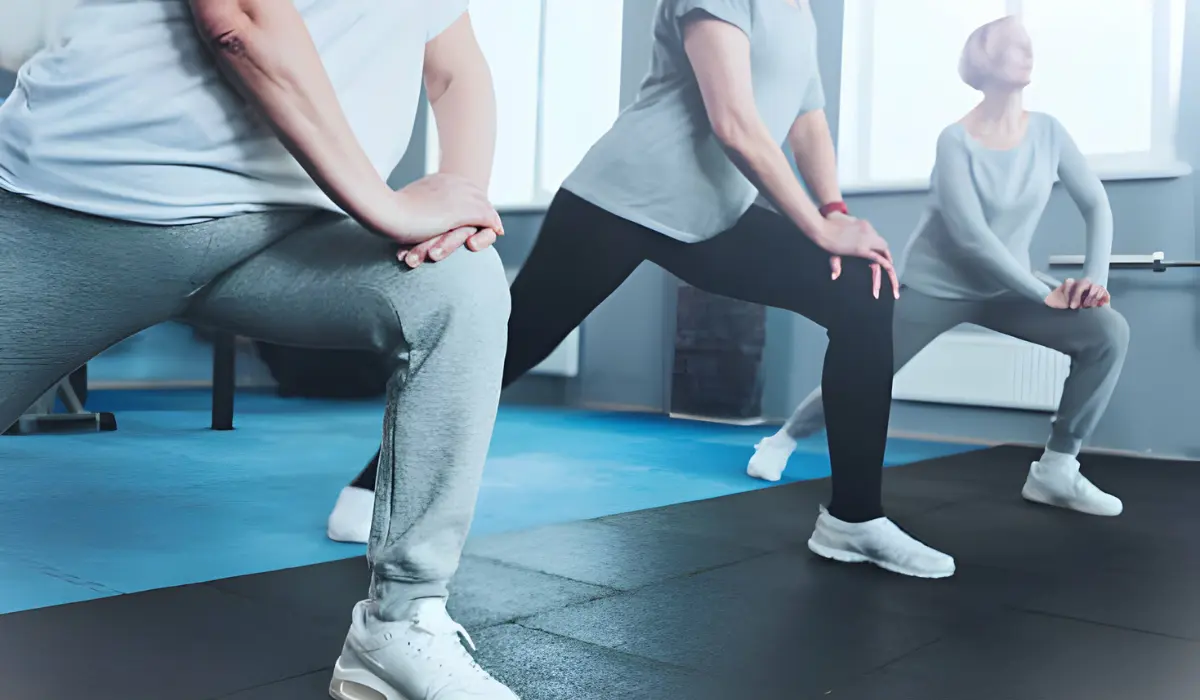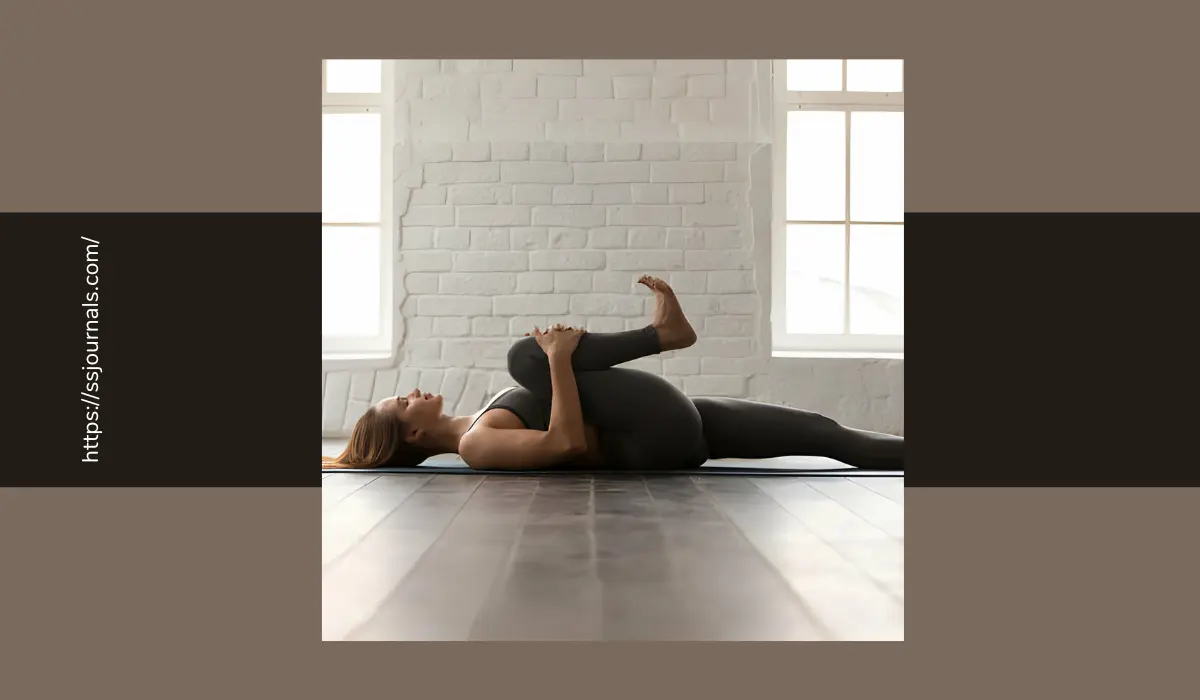If you’ve been diagnosed with chondromalacia patella, also known as “runner’s knee,” you know the aching pain it can bring to your knees. Chondromalacia patella occurs when the cartilage behind your kneecap softens or deteriorates. As it wears away, bone rubs against bone causing swelling, stiffness, and discomfort.
The good news is chondromalacia patella can often be treated with simple lifestyle changes like losing weight to take pressure off your knees along with physical therapy exercises to stretch and strengthen the muscles supporting your kneecap. Read on to discover five of the best chondromalacia patella exercises recommended by orthopedists and physical therapists. Learning how to properly do these knee exercises at home can help speed your recovery so you can get back to pain-free living.
Chondromalacia Patella

Chondromalacia patella is the most common cause of chronic knee pain in adolescents and young adults. It’s sometimes called “runner’s knee” or “jumper’s knee” because it’s often seen in athletes. But it can happen to anyone at any age.
The condition gets its name from the cartilage on the back of the kneecap called the patella. This cartilage serves as a buffer between the thighbone and kneecap. It allows them to glide smoothly against each other without friction as the knee moves.
In chondromalacia patella, that cartilage softens and wears away. Without the protective buffer, the thighbone rubs directly against the kneecap bone. This causes irritation, swelling, and tenderness around and under the kneecap. It can range from mild discomfort to severe pain. If left unchecked, the constant friction can damage the knee joint, leading to more swelling, limited motion, muscle weakness, and arthritis.
PFPS
Patellofemoral pain syndrome (PFPS) is closely related to chondromalacia patella. Some doctors use the names interchangeably. However, PFPS is a more general term for any type of pain arising between the kneecap (patella) and thighbone (femur).
The most common cause of PFPS is chondromalacia patella – softening of the cartilage behind the kneecap. But PFPS can also result from muscle imbalances or tightness around the knee, improper tracking of the kneecap, overuse injuries in athletes, and flat feet or knocked knees putting extra stress on the joint.
Women are at higher risk for PFPS than men due to wider hips and knocked knees leading to kneecap tracking issues. Regardless of the cause, the symptoms of PFPS are similar to chondromalacia patella.
What is the Fastest Way to Heal Chondromalacia?
When it comes to the fastest way to heal chondromalacia patella, physical therapy, and targeted chondromalacia patella exercises top the list. Under guidance from a physical therapist, you’ll receive a customized treatment plan that likely includes:
- Gentle range-of-motion exercises to improve flexibility in the knee joint, like heel slides and seated knee bends using a towel assist. Going through the full range of motion keeps scar tissue from forming.
- Patellar mobilization – Massaging around the edges of the kneecap to break up scar tissue or adhesions.
- Taping or bracing to improve patellar tracking and take pressure off irritated areas behind the kneecap.
- Electrical muscle stimulation to contract and relax muscles around the knee joint.
- Ultrasound treatment delivers deep heat therapy for better blood flow and healing nutrients.
The key is that the fastest recovery focuses on both stretching tight structures around the knee and strengthening weak muscles that aren’t properly supporting the joint. Targeted chondromalacia patella exercises will improve this dynamic balance and take pressure off the irritated cartilage behind the kneecap so it can regenerate.
Top 5 Chondromalacia Patella Exercises

The following simple yet effective chondromalacia patella rehab moves can improve patellar tracking, reduce friction on damaged cartilage, restore muscular imbalances, and ultimately help you get back to pain-free function.
1. Straight Leg Raises
This exercise strengthens your quadriceps muscles located on the top of your thigh which help support and stabilize your kneecap. Lie face up on the floor and lift one leg with a straight knee, holding for 5 seconds. Perform 2-3 sets of 10-15 reps on each leg.
2. Terminal Knee Extensions
This exercise improves kneecap tracking by strengthening the muscles that straighten and stabilize your knee. Sit on the edge of a sturdy surface. Support yourself with your hands behind you. Extend one leg slowly with control, straightening the knee completely. Flex foot. Hold for 5 seconds and then return to the starting position. Repeat 10-15 times per leg.
3. Wall Sits
This isometric exercise builds lower body and core endurance to support good knee alignment. Stand with your back flat against a wall. Walk feet 12” in front. Slowly lower your back down the wall bending your knees to 90 degrees, keeping your knees stacked over the ankles. Hold the sitting position for 30-90 seconds resting when fatigued.
4. Bridges
Bridge exercises target your glutes and core strength to improve stability around your knee joint. Lie face up on the floor, knees bent, feet flat. Keeping abs engaged, slowly raise hips off the floor, squeezing glutes. Avoid over-arching lower back. Hold the position for 5 seconds and then control its release. Repeat 10-15 times.
5. Calf Stretches
Tight calf muscles contribute to poor kneecap tracking. Stand facing a wall with palms pressed to the wall at shoulder height. Place one leg stepped back with a straight knee, the other knee slightly bent. Lean hips forward until stretch is felt in your calf. Hold 20-30 seconds and repeat on the other leg.
What to Avoid During Chondromalacia Patella?
Now that we know what are the top chondromalacia patella exercises, let’s find out what to avoid while you are suffering from the condition. When recovering from chondromalacia patella, certain activities should be avoided – at least temporarily – to prevent further irritation and let the cartilage heal. These include:
- Running – The pounding motion of running puts a lot of force across the joint surfaces in your knee. This directly irritates the damaged cartilage you’re trying to rest. Walking and low-impact cardio like swimming or biking are better alternatives during recovery.
- Squats / Lunges – Doing deep knee bends with weight is too much loading and pressure across knee cartilage in its weakened state.
- Stair Climbing – Going up and down stairs requires knees to bend at extreme ranges, rubbing damaged cartilage. Use elevators when available or consider a temporary stair lift if you have long flights at home. Take one step at a time slowly if stairs are unavoidable.
- Kneeling – Direct pressure on the kneecap forces it to compress worn cartilage behind it. Kneel on cushioned pads if gardening/cleaning until the pain resolves.
Can Chondromalacia Patella be Cured Permanently?
In the early and moderate stages of chondromalacia patella, the answer is often yes – it can frequently be cured permanently through conservative treatment like:
- Physical Therapy – Targeted chondromalacia patella exercises strengthen muscles supporting the joint while improving flexibility and patellar tracking. This eliminates friction on the cartilage so it can regenerate.
- Patellar Taping/Bracing – Special athletic tape techniques pull the kneecap gently into better alignment, taking pressure off damaged cartilage so it can heal.
- Weight Loss – Losing even 5-10 lbs takes a significant load off knee joints, allowing cartilage relief.
- Medication – Anti-inflammatories reduce swelling and pain chemicals irritating cartilage. Supplements like glucosamine provide building blocks for cartilage regrowth.
- Injection Therapy – Cortisone shots can temporarily relieve inflammation and pain if other treatments aren’t working.
So, what is the best treatment for chondromalacia patella? Medical experts overwhelmingly agree that physical therapy focused on gentle knee stretches and targeted strength training of muscles supporting the kneecap is the best first-line treatment for chondromalacia patella.
The key is beginning rehab as early as possible after symptom onset. Catching the chondromalacia patella in its early stages and being compliant with physical therapy for muscle strengthening and flexibility around the knee gives the cartilage its best chance of fully mending on its own without further degradation.
However, if the condition progresses to extensive cartilage damage behind the kneecap and develops into arthritis, surgery to smooth roughened bone or replace joint surfaces may become necessary.
Also Check:- Top 5 Mistakes After Knee Replacement Surgery: Avoid Unnecessary Pain
Conclusion
If you’ve recently been diagnosed with patellofemoral syndrome or chondromalacia patella after the onset of vague knee pain, don’t panic. In many cases, these common conditions causing cartilage damage behind the kneecap can heal through simple at-home chondromalacia patella exercises and conservative treatments when caught early.
The key is being compliant with the customized physical therapy plan your doctor outlines which will specifically target and strengthen weak areas around your knees and hips. In combination with plenty of rest, ice packs, and anti-inflammatory supplements, you may start noticing less pain with daily activities within just 1-2 weeks.
The question is – are you ready to do your part through diligent at-home physical therapy so your body can work its magic mending your cartilage for pain-free knees that function for decades to come? Let me know in the comments what exercises have worked best for your chondromalacia!

